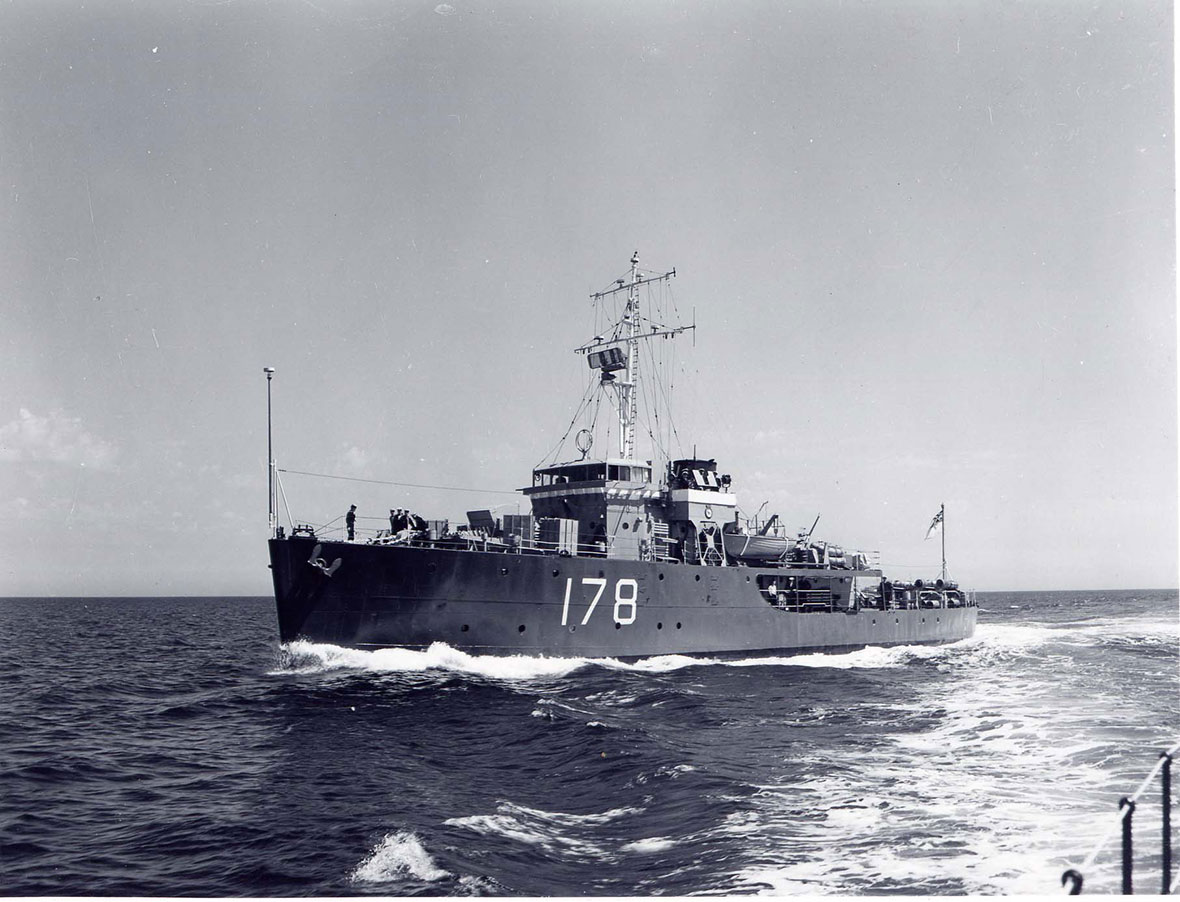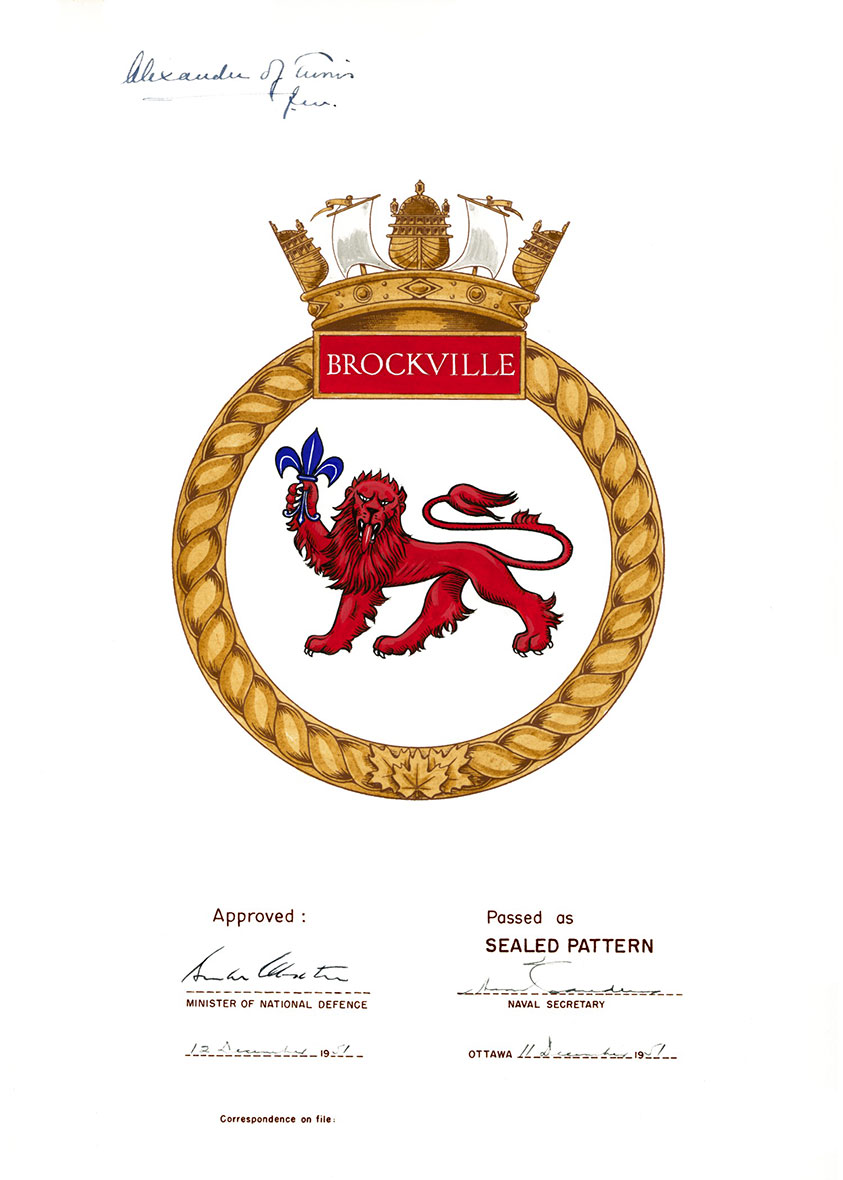HMSC Brockville
There has been only 1 vessel named Brockville in the Royal Canadian Navy.
HMCS Brockville (J270 / 178)
The HMCS Brockville was a Bangor class minesweeper. The Bangor class ships were built in order to replace the old Basset class minesweepers, as they were larger, faster, had much greater endurance, and burned oil as opposed to coal. As enemy mines were laid only once in 1943 in Canadian waters, the Bangors were used primarily as escorts to coastal shipping or as local escorts to ocean convoys.
Commissioned on September 19, 1942, at Sorel, Quebec, she arrived at Halifax, Nova Scotia on October 20 in need of 2 weeks’ repairs, having grounded at Rimouski, Quebec, en route. After working-up, she was assigned briefly to Western Local Escort Force and then to Halifax Force. In March, she was transferred back to Western Local Escort Force and, when that force was divided into escort groups in June, she became a member of Escort Group W-3. In May 1944, Brockville returned to Sydney Force remaining with it until June 1945. She had 2 wartime refits: one at Dalhousie, New Brunswick, lasting 7 weeks through August and September 1943; the other a 3-month refit at Lunenburg, Nova Scotia at the end of 1944, which was followed by work-ups in Bermuda in March 1945.
On August 28, 1945, she was paid off at Halifax, Nova Scotia, transferred to the marine section of the Royal Canadian Mounted Police, and renamed Macleod. The Royal Canadian Navy reacquired HMCS Brockville in 1950 and recommissioned her on April 5, 1951. After modernization at Lauzon, Quebec, in 1952, she was assigned to Point Edward Naval Base at Sydney, Nova Scotia, and later transferred to the west coast. She was paid off into reserve at Esquimalt, British Columbia, on October 31, 1958, and broken up 3 years later.
- Displacement: 592 tons
- Dimensions: 49.4 m x 8.6 m x 2.5 m
- Speed: 16 knots
- Crew: 83
- Armament: (original) one 12-pounder (5.45 kg) gun, two 20-mm guns (2 x I) and depth charges; (post-war) Hedgehog, two 20-mm guns (2 x I) and depth charges.

